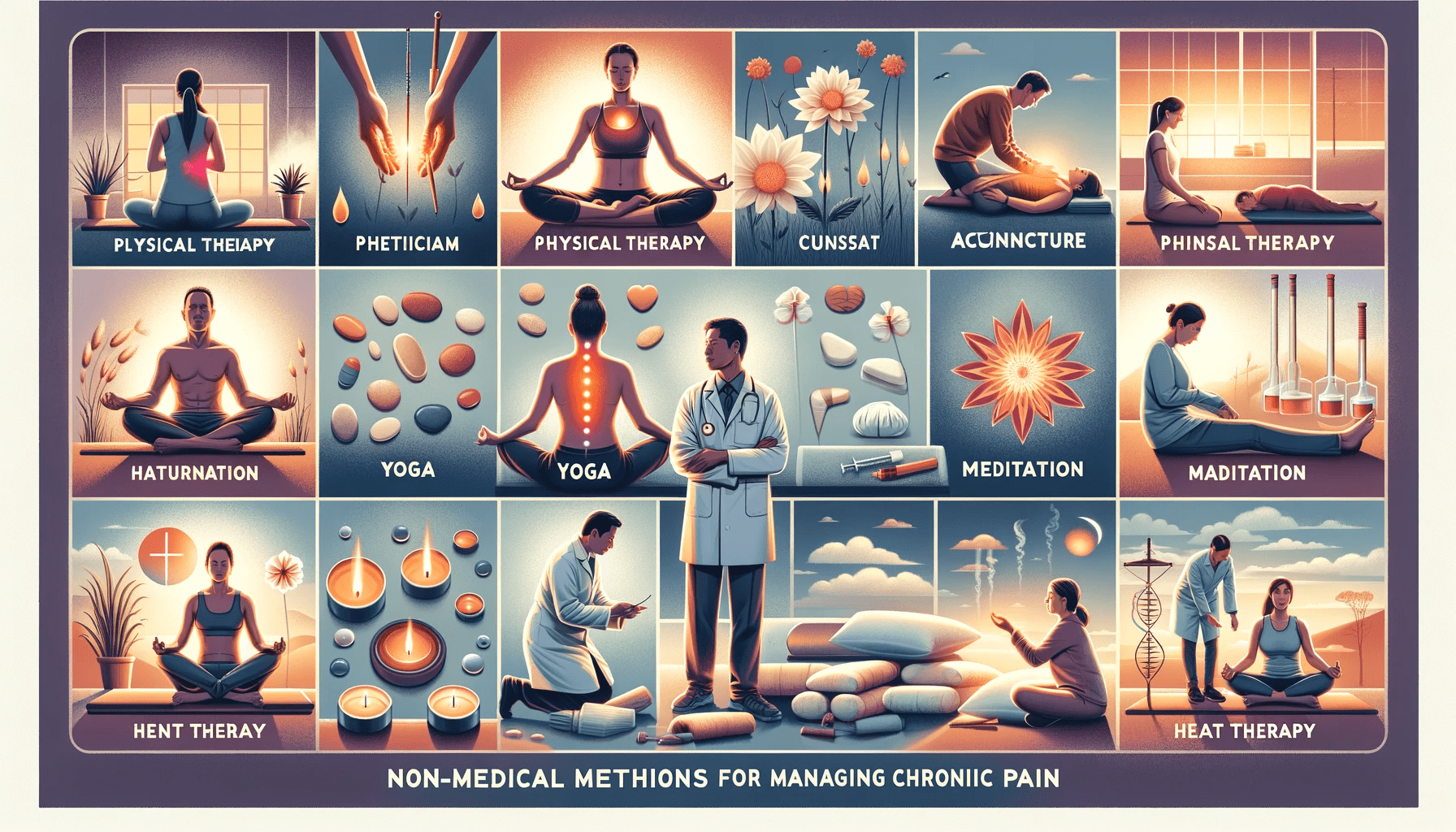Chronic pain is a persistent and often debilitating condition that can significantly impact the quality of life. While medication is a common treatment, many seek non-pharmacological methods to manage their pain effectively. This article explores various evidence-based strategies for managing chronic pain without relying solely on medication.
1. Physical Therapy and Exercise
Physical therapy and regular exercise are foundational in managing chronic pain.
- Physical Therapy: Tailored physical therapy can help improve mobility and reduce pain. According to the "Journal of Pain Research," physical therapy is effective in managing conditions like lower back pain, one of the most common types of chronic pain【1】.
- Exercise: Regular exercise can reduce pain and improve physical function, as noted in the "Clinical Journal of Pain"【2】. Activities like walking, swimming, or yoga can be especially beneficial.
2. Cognitive Behavioral Therapy (CBT)
CBT is a psychological intervention that helps patients change their pain-related thoughts and behaviors.
- Mental Health and Pain: The "American Journal of Psychiatry" highlights the effectiveness of CBT in reducing the psychological impact of chronic pain and improving patients' quality of life【3】.
3. Mindfulness and Meditation
Mindfulness practices and meditation can reduce pain perception and improve pain management.
- Reducing Pain Perception: Research in "The Journal of Pain" shows that mindfulness meditation can decrease the subjective experience of pain【4】.
4. Acupuncture
Acupuncture is a traditional Chinese medicine technique that involves inserting thin needles into specific body points.
- Effectiveness in Pain Relief: A meta-analysis in "Pain" found that acupuncture is effective for several types of chronic pain, including headaches and osteoarthritis pain【5】.
5. Diet and Nutrition
Diet can play a significant role in managing chronic pain.
- Anti-inflammatory Foods: Foods with anti-inflammatory properties, such as omega-3 fatty acids found in fish and flaxseeds, can help reduce pain. The "European Journal of Clinical Nutrition" discusses the role of diet in inflammation and pain【6】.
6. Massage Therapy
Massage therapy can offer pain relief and muscle relaxation.
- Benefits for Chronic Pain: The "Archives of Physical Medicine and Rehabilitation" published findings that massage therapy can be effective in reducing chronic pain, particularly in the back and neck【7】.
7. Heat and Cold Therapy
Applying heat or cold to the affected area can be a simple yet effective way to manage pain.
- Thermotherapy and Cryotherapy: These therapies can reduce muscle tension and pain. The "Journal of Physiotherapy" found that heat and cold therapy can provide significant pain relief【8】.
8. Sleep Hygiene
Improving sleep quality can also play a role in pain management.
- Sleep and Pain Connection: Poor sleep can exacerbate pain. The "Clinical Journal of Pain" reports that good sleep hygiene practices can improve pain outcomes【9】.
9. Stress Management Techniques
Stress can aggravate chronic pain, making stress management techniques crucial.
- Relaxation Techniques: Activities like deep breathing, progressive muscle relaxation, and biofeedback can help manage stress and, consequently, pain.
Conclusion
Managing chronic pain without medication involves a multi-faceted approach that includes physical therapies, psychological interventions, lifestyle changes, and alternative treatments. These methods can provide substantial relief and improve the quality of life for individuals suffering from chronic pain.
References
- Jette D.U., Hunter S.J., Burkett L. (2020). "Physical Therapy Interventions for Patients With Chronic Low Back Pain." Journal of Pain Research.
- Hurley D.A., Tully M.A., Lonsdale C., et al. (2015). "Supervised walking in comparison with fitness training for chronic back pain in physiotherapy: a randomized controlled trial." Clinical Journal of Pain.
- Ehde D.M., Dillworth T.M., Turner J.A. (2014). "Cognitive-Behavioral Therapy for Individuals With Chronic Pain." American Journal of Psychiatry.
- Zeidan F., Grant J.A., Brown C.A., et al. (2012). "Mindfulness meditation-related pain relief: Evidence for unique brain mechanisms in the regulation of pain." The Journal of Pain.
- Vickers A.J., Linde K. (2014). "Acupuncture for chronic pain." Pain.
- Calder P.C., Albers R., Antoine J.M., et al. (2009). "Inflammatory Disease Processes and Interactions with Nutrition." European Journal of Clinical Nutrition.
- Moyer C.A., Rounds J., Hannum J.W. (2004). "A meta-analysis of massage therapy research." Archives of Physical Medicine and Rehabilitation.
- Malanga G., Yan N., Stark J. (2015). "Mechanisms and efficacy of heat and cold therapies for musculoskeletal injury." Journal of Physiotherapy.
- Smith M.T., Haythornthwaite J.A. (2004). "How do sleep disturbance and chronic pain inter-relate? Insights from the longitudinal and cognitive-behavioral clinical trials literature." Clinical Journal of Pain.
Discover the some of these plants on the Amazon store : link

Leave a comment